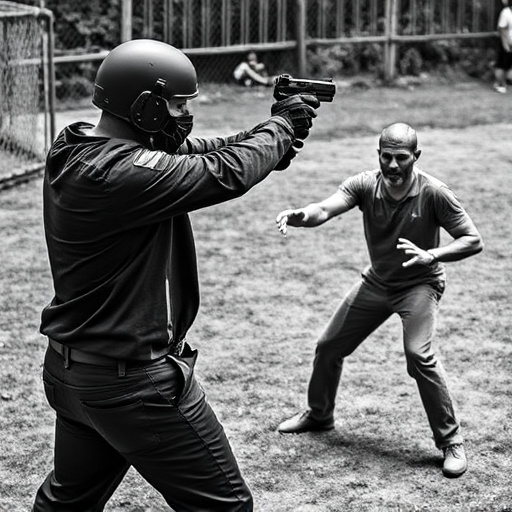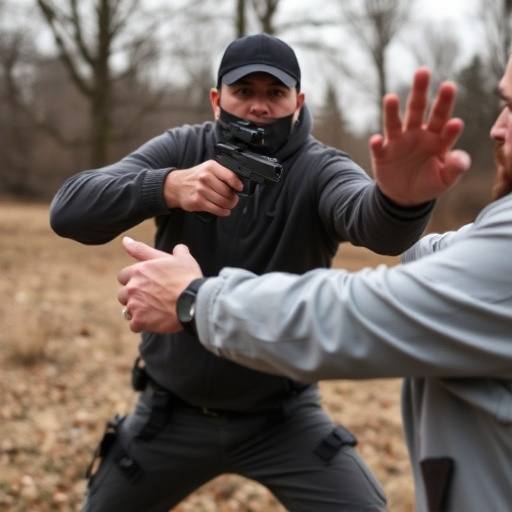Civilian Taser Ownership: State Laws, Battery Care, and Debunking Myths
Understanding U.S. state laws regulating civilian taser ownership is crucial for responsible self-de…….
Understanding U.S. state laws regulating civilian taser ownership is crucial for responsible self-defense. Each state has unique rules on who can own, carry, and use tasers, with age restrictions, permits, and training requirements. Optimal taser battery life (200-500 discharges) requires adherence to manufacturer guidelines for charging, storage, and replacement, avoiding extreme temperatures, and regular maintenance. Proper care ensures device reliability and safety in critical situations. Debunking myths: state laws vary, and proper training plus regular battery maintenance are essential for safe taser use.
“Unraveling the complexities of civilian tasers: A comprehensive guide to state laws and ownership rights. With varying regulations across the states, understanding your rights and responsibilities is crucial before acquiring a stun gun. This article delves into the eligibility criteria, legal carry requirements, and best practices for maintaining optimal battery life. Additionally, we debunk common myths surrounding civilian taser ownership. From eligibility to battery care, this is your go-to resource for navigating the legal landscape of stun guns.”
- Understanding State Laws Regulating Civilian Taser Ownership
- Eligibility Criteria for Acquiring a Stun Gun
- Legal Requirements for Carrying and Using a Taser
- Maintaining Battery Life: Tips and Best Practices
- Common Myths and Misconceptions About Civilian Taser Ownership
Understanding State Laws Regulating Civilian Taser Ownership

Understanding State Laws Regulating Civilian Taser Ownership
In the United States, civilian taser ownership is subject to stringent state laws that vary significantly from one jurisdiction to another. Before considering the purchase and possession of a stun gun, it’s crucial to familiarize yourself with these regulations. Each state has its own set of rules regarding who can own a taser, where they can be carried, and how they can be used. Some states allow open carry, while others require permits or limit use to self-defense scenarios. Moreover, specific provisions may cover the age restrictions for ownership, waiting periods after purchase, and the types of tasers permitted.
Knowing how to maintain stun gun battery life is also integral to responsible taser ownership. Batteries typically last between 200 to 500 discharges, depending on the model and usage frequency. Regular cleaning, proper storage, and adherence to manufacturer guidelines can extend battery lifespan. Additionally, keeping detailed records of battery usage and condition can help ensure compliance with state laws that may require regular testing or replacement for continued legal possession.
Eligibility Criteria for Acquiring a Stun Gun

In most states, individuals looking to acquire a stun gun must meet specific eligibility criteria. These requirements often include being at least 18 years old and passing a background check. Some jurisdictions may also mandate proof of training or completion of a safety course before purchasing a stun device. The purpose behind these regulations is multifaceted; they ensure responsible ownership, prevent misuse, and guarantee that users understand the device’s capabilities and limitations.
Beyond meeting initial eligibility standards, maintaining proper battery life is crucial for a stun gun’s effectiveness. Stun guns rely on high-voltage batteries to deliver their electric shock, so regular care is essential. Users should follow manufacturer guidelines for charging and storage, avoid extreme temperature changes, and replace batteries according to the recommended schedule. Proper maintenance not only extends the device’s operational lifespan but also ensures reliable performance when needed.
Legal Requirements for Carrying and Using a Taser

In many states, individuals seeking to own and carry a taser for personal protection must meet specific legal requirements. These typically include age restrictions, background checks, and training or certification courses. Some states mandate that users possess a concealed weapons permit before acquiring a taser, while others allow open carry without additional licensing. Additionally, there are often limitations on the type of taser permitted, with restrictions on voltage levels and features to ensure safety and reduce risk of abuse.
To maintain stun gun battery life and ensure reliable operation when needed, users must follow proper care instructions. This includes keeping the device charged at optimal levels, regularly testing its functionality, and storing it in a safe location away from direct sunlight or extreme temperatures. Understanding state laws regarding taser ownership and proper battery maintenance are crucial steps for responsible civilian armament.
Maintaining Battery Life: Tips and Best Practices

Maintaining the battery life of your stun gun is crucial for its effectiveness and longevity. Here are some essential tips to help you extend the lifespan of your device’s battery: Regularly inspect your stun gun for any signs of damage or corrosion, especially around the battery compartment. Keep it clean and dry to prevent short circuits. Most modern stun guns use lithium-ion batteries, which require less maintenance than older models. Follow the manufacturer’s guidelines for charging and storage, as overcharging or storing them in extreme temperatures can degrade their performance.
A useful practice is to keep a spare fully charged battery on hand. This way, you ensure your stun gun remains operational when you need it most. Additionally, consider purchasing a battery tester to monitor the health of your batteries periodically, allowing for proactive replacement if necessary. Remember, proper care and attention to battery maintenance will not only extend the life of your stun gun but also guarantee its reliability in critical situations.
Common Myths and Misconceptions About Civilian Taser Ownership

Common Myths and Misconceptions About Civilian Taser Ownership
One of the most prevalent myths surrounding civilian taser ownership is that it’s a simple process with minimal legal requirements. In reality, accessing and owning a stun gun varies greatly from state to state in the U.S., with each having its own set of rules and regulations. Some states allow open carry, while others mandate permits or registration. Additionally, there are often restrictions on who can buy a taser—age limits, background checks, and waiting periods are not uncommon.
Another common misconception is that tasers are entirely without consequence. While a stun gun can immobilize an assailant, it’s not without risk. Proper training is crucial to ensure safe and legal use. Furthermore, maintaining your taser, especially the battery life, is essential for reliability when you need it most. Regular care and attention to how to maintain stun gun battery life extend its lifespan and guarantee its functionality in emergency situations.
Understanding state laws is crucial for anyone considering civilian taser ownership. This article has navigated the eligibility criteria, legal requirements, and best practices, including essential tips on maintaining battery life. By adhering to these guidelines, folks can ensure they’re using stun guns responsibly and legally. Remember that staying informed about local regulations and proper maintenance is key to being a safe and effective guardian of your personal safety.


